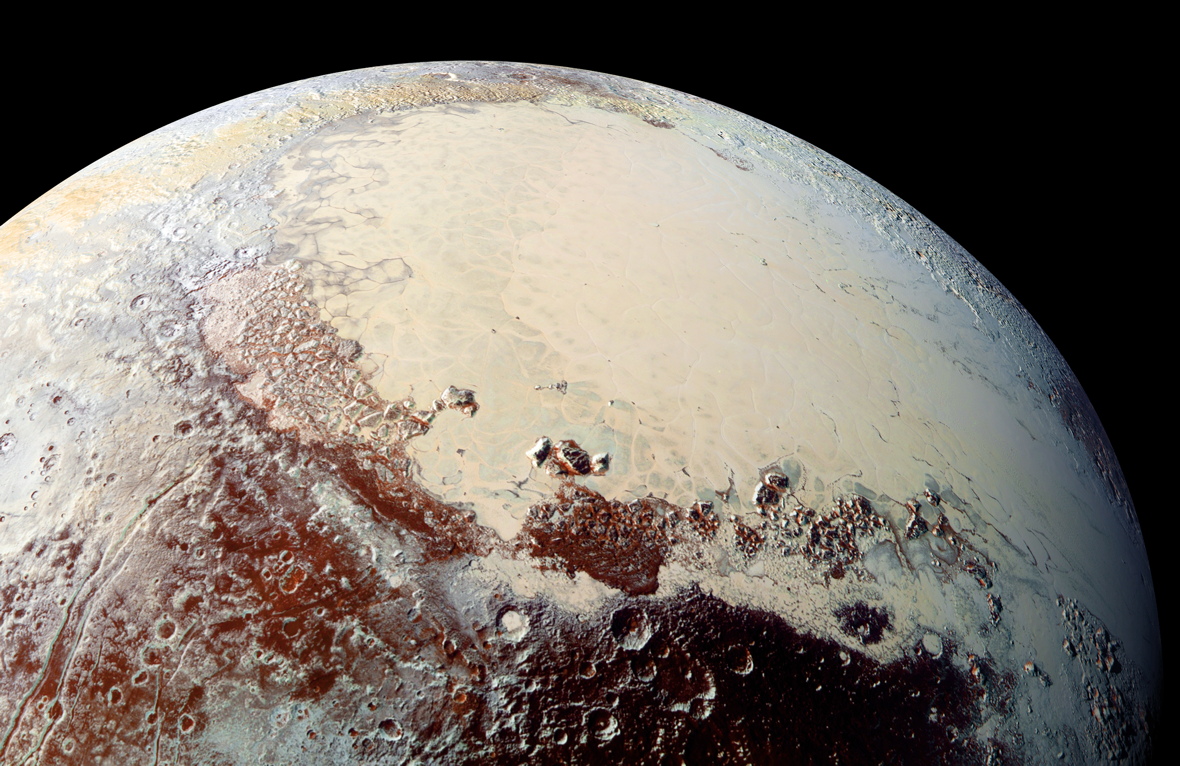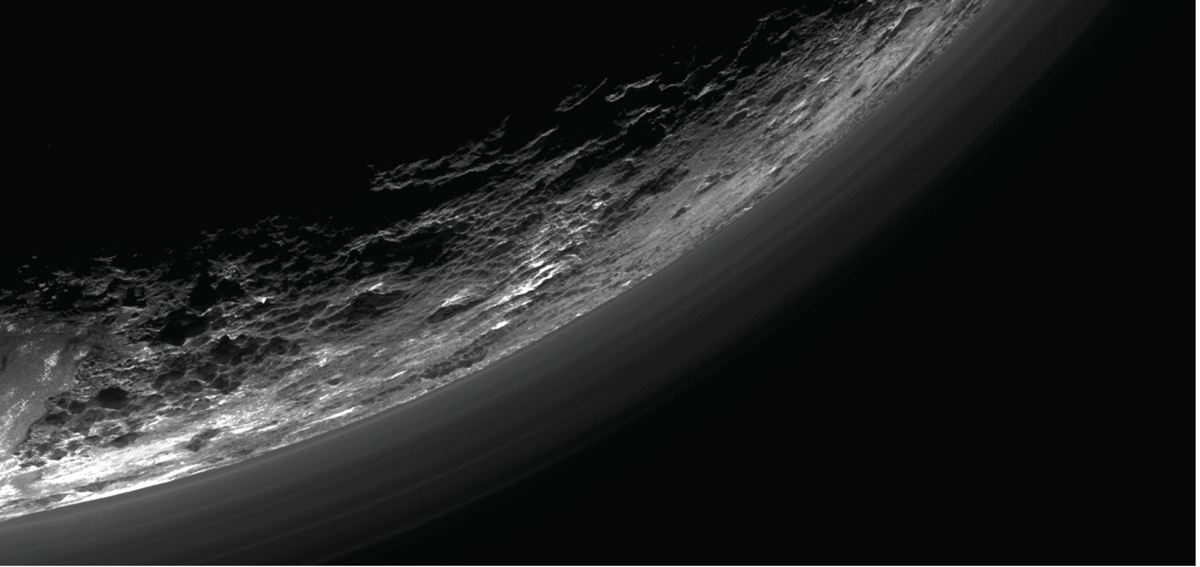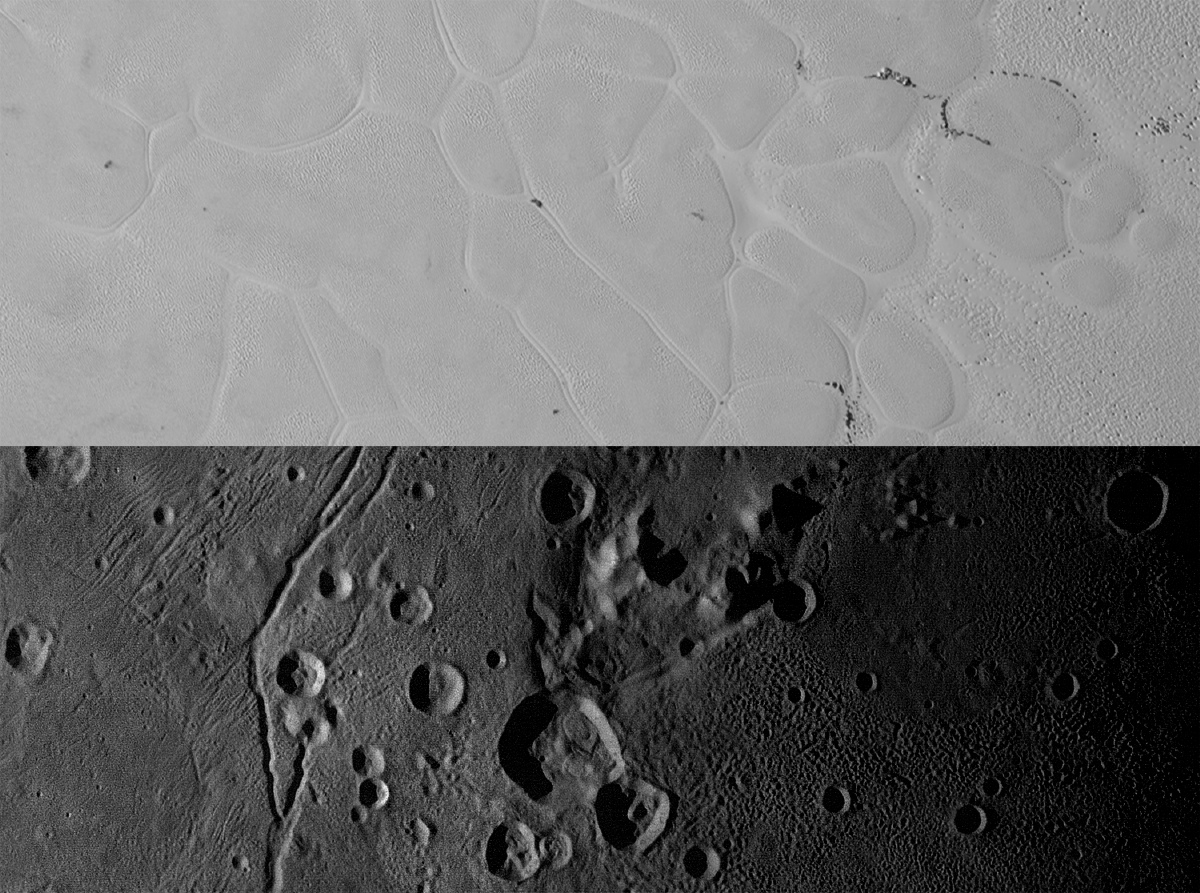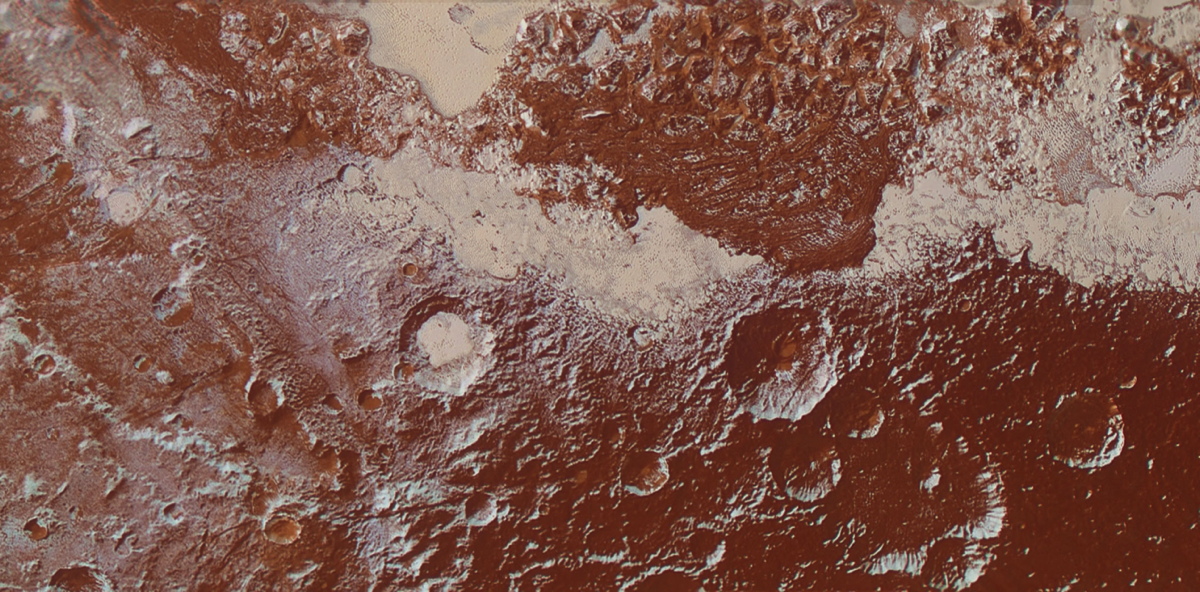Beautiful, Bewitching Pluto Poses in New Images from New Horizons Probe

And the hits just keep on coming. Another batch of Pluto photos from NASA's New Horizons probe reveals the majesty and mystery of this icy world.
The images are the latest releases from the treasure trove of data and snapshots captured by during New Horizon's close flyby of Pluto on July 14, 2015. One of the new images gives a close-up view of the unofficially titled Sputnik Planum, a heart-shaped region on Pluto's surface that is suspiciously crater-free.
This week, five new research papers appeared in the journal Science, discussing new discoveries about Pluto that have been revealed thanks to the data collected by New Horizons. Check below to see three more jaw-dropping snapshots of Pluto. [Destination Pluto: NASA's New Horizons Mission in Pictures]

One haunting snapshot, taken by the Ralph/Multispectral Visible Imaging Camera (MVIC), captures layers of atmospheric haze above Pluto's surface. The different layers of haze (about 20 can be seen in this image) have been found to extend across the surface for hundreds of kilometers. But according to NASA, they are not strictly parallel to the dwarf planet's surface. "For example, scientists note a haze layer about 3 miles (5 kilometers) above the surface (lower-left area of the image), which descends to the surface at the right," according to a statement from the space agency.

The top portion of this image shows that a smooth section of the informally named Sputnik Planum is 228 miles (367 km) wide. Beneath it is a close-up of the also informally named Vulcan Planum on the surface of Pluto's largest moon, Charon, that is 194 miles (312 km) wide.
Sputnik Planum is free of craters, which suggests that it experienced recent geologic activity. Vulcan Planum is dotted with not only craters, but also deep troughs. Also visible is the mountain Clarke Mons, which appears to be surrounded by a deep "moat." The highly textured surface indicates that the surface of Charon is ancient, according to NASA. The new Science papers report that water-ice-rich Vulcan Planum "is likely a vast cryovolcanic flow or flows that erupted onto Charon's surface about 4 billion years ago. These flows are likely related to the freezing of an internal ocean that globally ruptured Charon's crust," the statement said.

It's Pluto in a whole new light. This enhanced color view of Pluto's surface was created using two of New Horizons' instruments: the Ralph/Multispectral Visible Imaging Camera (MVIC) color imagery, and the Long Range Reconnaissance Imager panchromatic imagery.
Get the Space.com Newsletter
Breaking space news, the latest updates on rocket launches, skywatching events and more!
The region shown in the image is just underneath the western lobe of Sputnik Planum (the tip of the craterless plane dips down at the top middle of the image). Ices that fill Sputnik Planum have altered the surrounding terrain, "creating a chaoslike array of blocky mountains," NASA officials said.
NASA has rounded up a list of the top new findings reported in those research papers. Because of the spacecraft's relatively low data transfer rate, information collected during the flyby is still being downloaded to Earth, which means scientists still have more layers to pull back on this amazing object.
Follow Calla Cofield @callacofield. Follow us @Spacedotcom, Facebook and Google+. Original article on Space.com.
Join our Space Forums to keep talking space on the latest missions, night sky and more! And if you have a news tip, correction or comment, let us know at: community@space.com.

Calla Cofield joined Space.com's crew in October 2014. She enjoys writing about black holes, exploding stars, ripples in space-time, science in comic books, and all the mysteries of the cosmos. Prior to joining Space.com Calla worked as a freelance writer, with her work appearing in APS News, Symmetry magazine, Scientific American, Nature News, Physics World, and others. From 2010 to 2014 she was a producer for The Physics Central Podcast. Previously, Calla worked at the American Museum of Natural History in New York City (hands down the best office building ever) and SLAC National Accelerator Laboratory in California. Calla studied physics at the University of Massachusetts, Amherst and is originally from Sandy, Utah. In 2018, Calla left Space.com to join NASA's Jet Propulsion Laboratory media team where she oversees astronomy, physics, exoplanets and the Cold Atom Lab mission. She has been underground at three of the largest particle accelerators in the world and would really like to know what the heck dark matter is. Contact Calla via: E-Mail – Twitter









